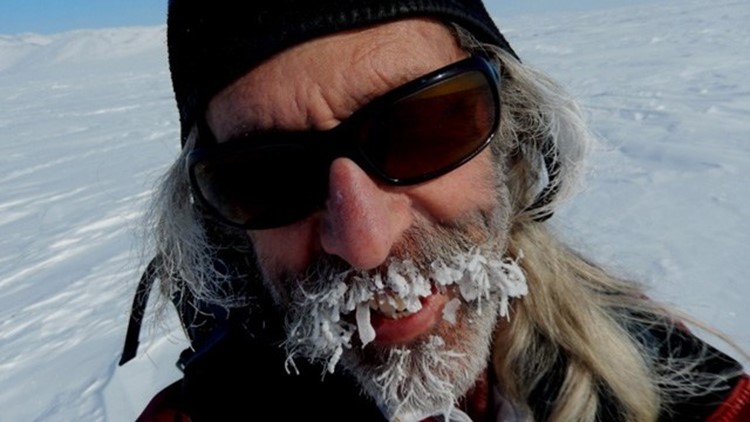As a professor at Colorado State University, Joel Berger makes his living in classrooms. But his real passion is outside, in some of the most inhospitable places on earth.
Berger has done research across five continents, including the Arctic region of Alaska, the Tibetan Plateau, and Mongolia. His friend and fellow conservationist Clayton Miller says Joel Berger is the kind of guy who would follow his heart practically to the ends of the earth: "He is a conservationist, he's an academic, he wears lots of different hats and he does it very successfully and it's all attributed to his unique personality."
Berger's personality has helped convince African nations like Namibia and Zimbabwe to protect a dwindling rhino population. In the Arctic, he has studied how global warming and the effect it's having on animals like polar bears and muskoxen.
"Warming temperatures at some point will be harmful," he said. "But there is, as in any system, a lot of complexity, but using muskox is a metaphor for remote. It's about muskox, but it's also about conservation in these big broad systems."
That's not to say the Berger is just a big-picture guy. He also revels in the details. He is a senior scientist with the Wildlife Conservation Society, which focuses on saving wildlife and the wild places they live. He understands that the two go hand in hand, and the little details can have big effects on the outcome.
An example of putting that theory into action is his work to help create America's first federally-sanctioned wildlife migration corridor, the Path of the Pronghorn, in Wyoming's Yellowstone Ecosystem. The Path protects an icon of the American West as it travels an ancient route across sagebrush plains and mountains.
To create it, he had to bring together the interests of ranchers, cowboys, oil and gas companies, local leaders, and the governor. He had to convince all of them that they had a stake in the outcome.
"When we would meet with the governor of Wyoming," he said, "we would point out Wyoming had Yellowstone, the world's first national park. It had the first national monument. It had the first national forest." Then he sealed the deal with this entreaty to the governor: "'Sir, wouldn't you want Wyoming, wouldn't this make people in Wyoming proud to have the first national migration corridor?'"
If all of the parties hadn't gotten on board, the animals would have disappeared from the Tetons. When one species goes, the ripple effect can be devastating to others. Berger's perseverance stands as testament to the feasibility of protecting landscapes for migrating wildlife.
He is a scientist's scientist, but Joel Berger also has a common touch. He is an effective teacher, and has reached out to non-scientists with four books on wild horses, rhinos, bison, and fear in prey species. He has also co-edited works on bio-diversity and believes that we can only really understand the big picture by breaking it down into it's smallest pieces. .
Berger is a conservationist that believes we can only really understand the big picture by breaking it down the it's smallest pieces. Fellow professor Dan Pletscher: "Joel is very high energy. He gets an idea. He works on it in his head, I think. I don't know exactly how he works, but he comes up with some innovative ideas." Ideas like the aforementioned pronghorn migration corridor in Grand Teton National Park. Without it, the animals would have disappeared from the Tetons.
Joel Berger's work has attracted the attention a number of conservation organizations over the years -- such as the American Society of Mammologists and the Society for Conservation Biology. His work has been honored with a number of awards. As one of the six finalists for the 2016 Indianapolis Prize, he could win an unrestricted $250,000 award to help in the work of preserving environments and the species of plants and animals who live there. It is arguably the most lucrative conservation award in the world today, that can help him bring aid to the ancient animals that he loves -- and usually can only see from a distance.
"It's inspiring to me to be in wild places to see animals still roaming as they did 10,000 and 20,000 years ago," he said. "Maybe it's like that peak that people like to climb. They climb it because it's there. I like to do it because the animals are still there." If he has his way and his work continues to have impact, the animals will still be there long after his work ends.
2016 Indianapolis Prize



